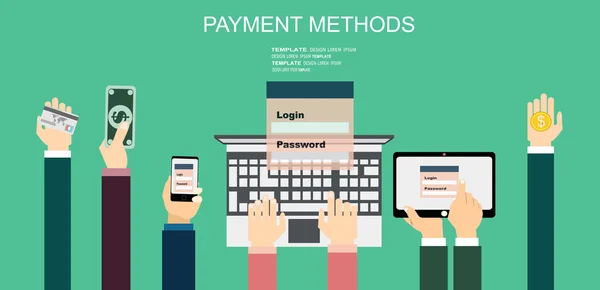The world of Forex trading is fast-paced and ever-evolving, with traders always on the lookout for the most efficient and secure payment methods. With numerous options available, it can be overwhelming to choose the best one that suits your trading needs. In this article, we will reveal the top payment methods for Forex traders, examining the pros and cons of each, and exploring the emerging trends in the market.
The Best Forex Payment Methods
When it comes to Forex trading, the payment method you choose can significantly impact your trading experience. The best payment methods offer a combination of security, speed, and convenience. E-wallets, credit cards, and bank transfers are among the most popular options, each with its own set of advantages. It’s essential to consider factors such as transaction fees, processing times, and currency conversion rates when selecting a payment method. Ultimately, the best payment method for you will depend on your specific trading strategy and preferences.
| Payment System | Transaction Fees | Processing Time | Global Availability | Security Features | Additional Notes |
|---|---|---|---|---|---|
| PayPal | Low to moderate, varies by country and transaction type | Instant to a few hours | Widely available in over 200 countries | Advanced encryption, fraud protection, dispute resolution | Widely trusted, user-friendly interface |
| Skrill | Low to moderate, some free options | Instant to a few hours | Available in 200+ countries | Two-factor authentication, SSL encryption | Offers a prepaid card for easy access to funds |
| Neteller | Low to moderate, some free options | Instant to a few hours | Available in 15 languages and over 200 countries | Two-factor authentication, SSL encryption | Popular in the Forex community, offers Neteller VIP program |
| Bank Wire Transfer | Usually higher, depends on the bank | 2-5 business days | Global, but depends on individual banks | High level of security as per banking regulations | Reliable but slower compared to e-wallets |
| Credit/Debit Cards (Visa/Mastercard) | Low to moderate, varies by bank | Instant to a few hours | Global | Fraud protection, encryption, chargeback options | Widely accepted, convenient for most users |
| Bitcoin/Cryptocurrencies | Low, but can vary with network congestion | Usually within an hour, depends on network | Global | Blockchain technology, high level of security and anonymity | Volatile exchange rates, increasing acceptance in Forex trading |
| WebMoney | Low to moderate | Instant to a few hours | Primarily in Russia and CIS countries, some global presence | WMID authentication, SSL encryption | Popular in Eastern Europe, offers multiple currency purses |
| UnionPay | Low to moderate | Instant to a few hours | Strong presence in Asia, available globally | Standard banking security measures | Largest card payment organization in China |
Top E-Wallets for Forex Trading
E-wallets have become a preferred choice for many Forex traders due to their convenience and fast processing times. Services like PayPal, Skrill, and Neteller allow traders to deposit and withdraw funds quickly and securely. These e-wallets often offer competitive fees and support a wide range of currencies. Furthermore, they provide an added layer of security, as traders do not need to share their bank or credit card details with the Forex broker.

Credit Cards: A Popular Choice
Credit cards are a popular payment method among Forex traders for several reasons. They are widely accepted by most brokers, provide instant deposits, and come with various rewards and benefits. Traders can use credit cards to manage their trading capital efficiently, taking advantage of credit lines and cashback offers. However, traders should be aware of potential high-interest rates on unpaid balances and the possibility of additional fees for currency conversion.
Bank Transfers: Pros and Cons
Bank transfers are a traditional payment method that offers high levels of security and is accepted by most Forex brokers. They are an excellent option for traders who deal with large sums of money and require a direct transfer from their bank account. However, bank transfers can have longer processing times compared to other payment methods and may come with higher fees. Traders should also consider the potential delays caused by bank holidays and weekends.
Cryptocurrency: The New Frontier
The rise of cryptocurrency has introduced a new payment method for Forex traders. Digital currencies like Bitcoin and Ethereum offer decentralized, fast, and secure transactions with low fees. They are becoming increasingly popular among traders who value privacy and want to avoid traditional banking systems. However, the volatile nature of cryptocurrencies can introduce additional risk factors, and not all brokers currently accept them as a payment method.

Forex Payment Trends to Watch
As the Forex market continues to grow, payment methods are evolving to meet the needs of modern traders. We are seeing a rise in the use of mobile payment solutions, which offer convenience and accessibility for traders on the go. Additionally, the integration of blockchain technology is promising to revolutionize the way payments are processed, with potential for even faster and more secure transactions. Traders should stay informed about these emerging trends to take advantage of the latest innovations in payment processing.
In conclusion, choosing the right payment method is a crucial aspect of Forex trading. Whether you prefer the speed of e-wallets, the convenience of credit cards, the security of bank transfers, or the innovation of cryptocurrency, it’s essential to consider the advantages and disadvantages of each. By staying up-to-date with the latest payment trends, Forex traders can ensure they are using the most efficient and secure methods to manage their trading funds.

